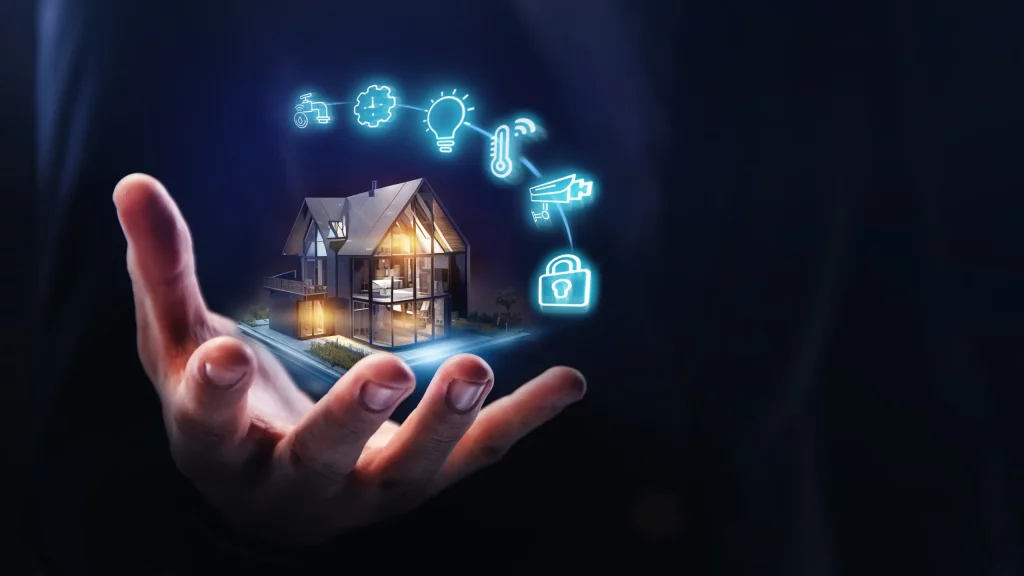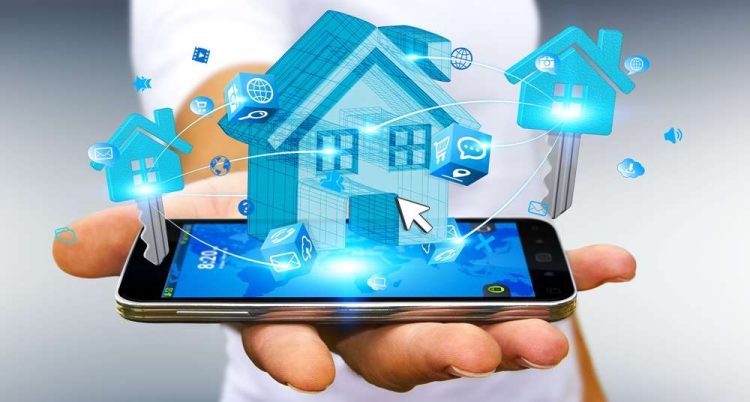Introduction
In the last decade, the term “smart home” has evolved from a futuristic concept to an integral part of many people’s daily lives. As technology continues to advance, smart home devices are becoming more sophisticated, accessible, and affordable. Whether it’s through voice-activated virtual assistants, energy-efficient smart thermostats, or security cameras that offer remote monitoring, consumers are increasingly adopting smart devices to enhance convenience, security, and energy efficiency.
These devices have expanded far beyond simple gadgets and have become essential tools for modern living. From controlling the lights and temperature in a home to managing appliances, entertainment systems, and even healthcare, smart devices are empowering consumers to make smarter, data-driven decisions about how they live and interact with their homes.
This article explores how smart home technology is transforming everyday life, examines the most popular smart devices currently on the market, and discusses the benefits and challenges associated with the growing adoption of these devices.
1. What Are Smart Home Devices?
1.1 Defining Smart Home Devices
Smart home devices are electronic gadgets that connect to the internet and can be remotely controlled through smartphones, tablets, or voice assistants. These devices use sensors, actuators, and cloud-based computing to monitor, automate, and optimize tasks within a household. Examples include smart lights, thermostats, security cameras, door locks, appliances, and entertainment systems.
1.2 How Smart Devices Work Together
A key feature of smart home devices is their ability to integrate with other systems, creating an ecosystem where devices communicate and work together. Through platforms like Amazon Alexa, Google Assistant, and Apple HomeKit, consumers can link devices, create routines, and control multiple devices with a single voice command or tap on a smartphone app.
For example, a smart thermostat can adjust the temperature based on occupancy detected by motion sensors. Likewise, a smart speaker can adjust lighting, play music, and even lock doors when prompted.
2. The Evolution of Smart Home Devices
2.1 Early Stages: From Basic Automation to Advanced Integration
The concept of automating home systems isn’t new. In fact, home automation began in the early 20th century, with devices such as programmable thermostats and automated lighting. However, the rise of the Internet of Things (IoT) and the development of cloud computing brought a massive shift to how these devices are designed and used. The ability to remotely control home devices through smartphones and the internet changed the game, making smart homes more accessible and user-friendly.
2.2 The Impact of 5G and AI on Smart Home Innovation
In recent years, 5G technology has played a critical role in enabling faster communication between smart home devices. The ultra-low latency and high bandwidth offered by 5G mean that data transfer speeds are faster, and devices can respond in real time. This has paved the way for the integration of more artificial intelligence (AI) features in smart devices, such as voice recognition, predictive automation, and more intuitive systems that learn from users’ behavior.
3. Popular Smart Home Devices
3.1 Smart Lighting Systems
One of the most popular categories of smart home devices is smart lighting. These systems allow homeowners to control their lights remotely, set timers, and even adjust brightness and color through voice commands or smartphone apps. Notable brands like Philips Hue and LIFX have revolutionized home lighting by offering energy-efficient, customizable lighting solutions.
These systems not only contribute to convenience and energy savings but can also enhance the atmosphere in a home. For example, smart bulbs can be set to change colors based on time of day or mood, improving both the aesthetic and functional quality of a home.
3.2 Smart Thermostats
Smart thermostats, such as Nest and Ecobee, allow homeowners to control their home’s temperature remotely. These devices are designed to learn from a user’s daily habits and automatically adjust the temperature for maximum comfort and energy efficiency. By detecting when the home is empty or when a person enters, smart thermostats can adjust heating or cooling accordingly, helping to lower utility bills and reduce energy consumption.
Moreover, some models have features like geofencing, which adjusts the temperature based on the user’s location, further enhancing convenience and energy savings.
3.3 Smart Security Systems
Home security is one of the most important considerations for any homeowner, and smart devices are transforming this aspect of home management. Smart security cameras, such as Ring and Arlo, allow users to monitor their property in real time, receive notifications of unusual activity, and even communicate with visitors or intruders through two-way audio.
In addition to cameras, smart door locks, motion detectors, and doorbell cameras are all part of integrated home security systems that can be monitored and controlled remotely. These systems offer greater peace of mind and the ability to secure the home even when the occupants are away.
3.4 Smart Appliances
Smart appliances—ranging from refrigerators and ovens to washing machines and dishwashers—have been gaining significant popularity. These devices not only offer convenience but also improve efficiency by optimizing energy use, automating tasks, and providing remote control features.
For instance, a smart refrigerator can notify users when groceries are running low or when items are about to expire, while a smart oven can be preheated remotely to ensure that meals are cooked to perfection. Some washing machines even allow users to monitor laundry cycles and schedule loads to run at optimal times for energy efficiency.
3.5 Voice Assistants and Smart Speakers
Smart speakers and voice assistants, such as Amazon Echo, Google Nest Audio, and Apple HomePod, are central to smart home ecosystems. These devices act as hubs for controlling other smart devices through voice commands, allowing users to adjust lighting, control temperature, play music, set reminders, and even order groceries or manage smart home devices without lifting a finger.
These voice-controlled assistants are equipped with AI that improves over time, learning users’ preferences and providing more personalized experiences.

4. The Benefits of Smart Home Devices
4.1 Convenience and Automation
One of the key reasons consumers are adopting smart home devices is the convenience they offer. Whether it’s controlling lights, adjusting thermostats, or checking security cameras from anywhere in the world, these devices allow users to automate tasks and access their home remotely.
Automation also plays a central role in enhancing convenience. Homeowners can create schedules or “scenes” for smart devices, where multiple actions occur simultaneously. For example, a “Good Night” scene could turn off the lights, lock the doors, and adjust the thermostat with a single voice command.
4.2 Energy Efficiency and Cost Savings
Smart home devices are designed to be energy-efficient, helping homeowners reduce their energy consumption. Smart thermostats and smart lighting systems, for example, allow users to optimize energy usage, potentially saving significant amounts on utility bills. The ability to track energy consumption in real-time also helps homeowners identify areas where they can make further improvements.
4.3 Security and Safety
Smart home technology provides enhanced security through smart cameras, doorbell systems, and motion detectors. These devices offer real-time alerts and remote monitoring, improving both the safety of the home and the peace of mind for its occupants.
Moreover, smart smoke detectors and carbon monoxide sensors are also available, providing an extra layer of safety by sending alerts to your phone if they detect danger when you’re not home.
5. Challenges and Considerations
5.1 Security and Privacy Risks
While smart home devices provide enhanced security, they also introduce new risks, particularly when it comes to data privacy. Many smart devices collect user data, including voice recordings, usage patterns, and even video footage. If not properly secured, this data could be vulnerable to hacking or misuse.
Consumers must be cautious about selecting devices that have strong data encryption and robust security features. Moreover, ensuring devices are regularly updated with security patches is essential for minimizing vulnerabilities.
5.2 Compatibility and Interoperability
As more consumers adopt smart home devices, the issue of compatibility has become a key consideration. Devices from different brands may not always work seamlessly together, creating potential frustration for users. While platforms like Amazon Alexa, Google Assistant, and Apple HomeKit aim to standardize and integrate devices, some manufacturers still create proprietary ecosystems that limit interoperability.
5.3 Cost Considerations
While the prices of smart home devices have decreased over time, they can still be costly, especially when outfitting an entire home with various devices. Consumers need to carefully evaluate which smart devices provide the best value for their needs, balancing the initial investment with long-term benefits in terms of energy savings, convenience, and security.
6. Conclusion
The growing adoption of smart home devices signifies a shift towards more connected, efficient, and secure living environments. These devices are revolutionizing how consumers interact with their homes, offering convenience, energy savings, and enhanced security. While there are challenges to consider, such as data privacy, compatibility, and cost, the potential of smart home technology to improve quality of life cannot be overstated.
As the smart home market continues to evolve, we can expect to see even more innovative devices and integrated solutions that will make homes smarter, more efficient, and more responsive to the needs of their occupants.











































